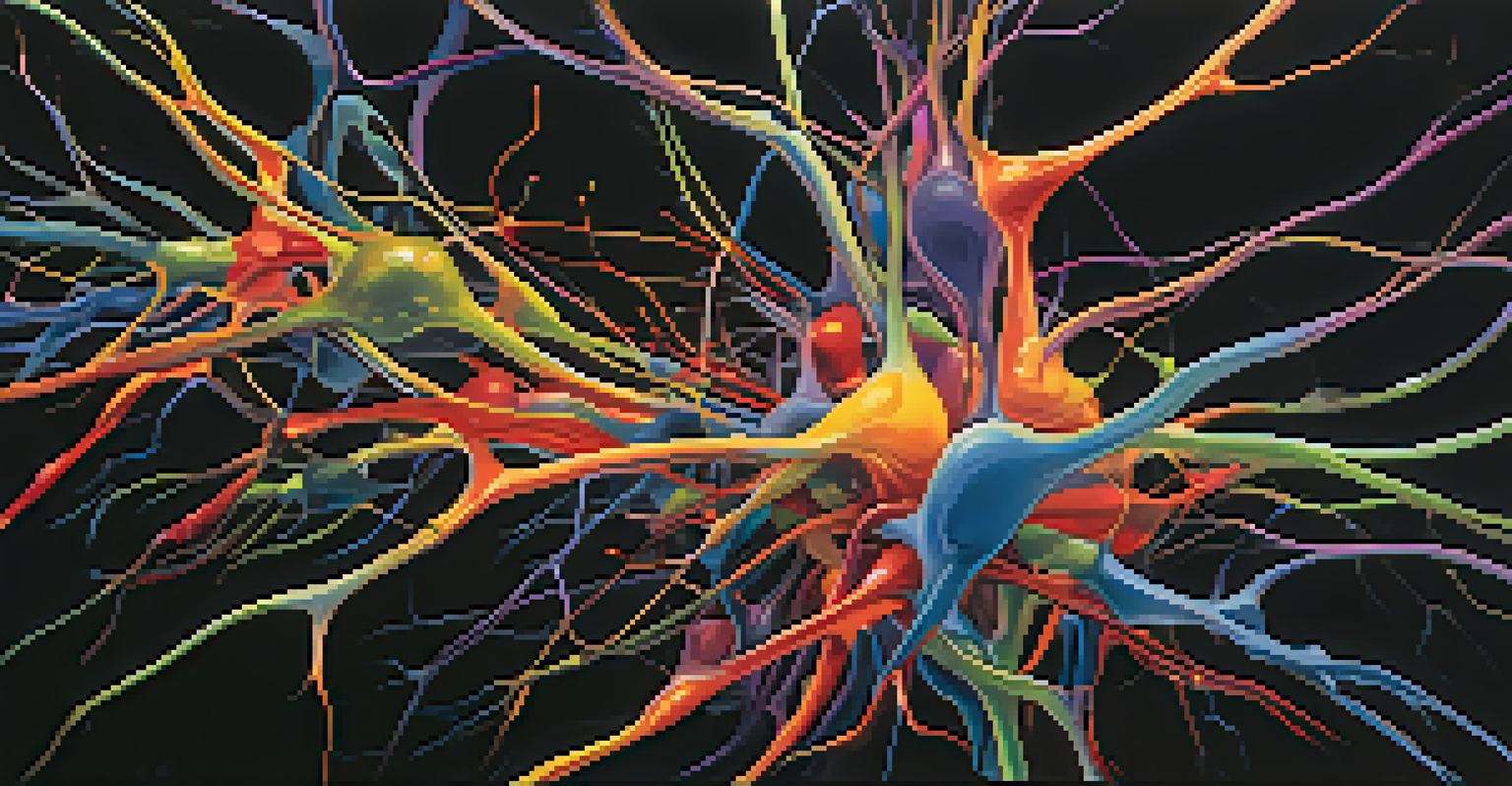The Role of Hallucinogens in Enhancing Cognitive Behavioral Therapy

Understanding Cognitive Behavioral Therapy (CBT)
Cognitive Behavioral Therapy, or CBT, is a form of psychotherapy that focuses on changing negative thought patterns and behaviors. It's widely used to treat conditions like depression, anxiety, and PTSD. By addressing the links between thoughts, emotions, and actions, CBT empowers individuals to develop healthier coping mechanisms.
The greatest discovery of my generation is that a human being can alter his life by altering his attitudes.
In practice, CBT involves structured sessions where a therapist guides a patient through their thought processes. Techniques often include cognitive restructuring, where patients learn to challenge and reframe their negative thoughts. This is crucial because our minds can sometimes play tricks on us, leading to distorted views of reality.
However, for some individuals, traditional CBT may not provide the relief they seek. This is where innovative approaches, including the potential use of hallucinogens, come into play. Recent studies have begun to explore how these substances might enhance the therapeutic experience.
What Are Hallucinogens and Their Effects?
Hallucinogens are substances that alter perception, mood, and various cognitive processes. Common examples include psilocybin (found in magic mushrooms), LSD, and mescaline. These substances can lead to profound changes in consciousness, often resulting in vivid visual or auditory experiences.

Users often report feelings of connectedness, introspection, and even spiritual experiences during a hallucinogenic trip. These altered states can sometimes help individuals confront difficult emotions or past traumas in a new light. It's like taking a step back from your life and viewing it through a different lens, which can be incredibly illuminating.
CBT Transforms Negative Thoughts
Cognitive Behavioral Therapy (CBT) effectively addresses negative thought patterns to improve mental health.
Research suggests that hallucinogens may promote neuroplasticity—the brain's ability to reorganize itself. This is particularly significant in the context of therapy, as it could mean that hallucinogens might help patients learn new ways of thinking and behaving, complementing the traditional CBT approach.
The Intersection of Hallucinogens and CBT
Integrating hallucinogens into CBT is an emerging area of research that holds promise. The idea is to use these substances in a controlled setting to enhance therapeutic outcomes. By creating a safe environment where patients can explore their thoughts and feelings, therapists may help them make breakthroughs that traditional methods alone might miss.
We cannot solve our problems with the same thinking we used when we created them.
For example, during a hallucinogenic experience, a patient might confront anxiety-provoking memories. The altered state can facilitate a deeper understanding of these issues, allowing for emotional release and healing. After the experience, the insights gained can be processed within the framework of CBT, leading to lasting change.
This combination aims to harness the benefits of both approaches, creating a more holistic path to mental wellness. As research continues, we may see more structured programs that utilize this synergy to help individuals navigate their mental health challenges.
Current Research on Hallucinogens in Therapy
Recent studies have shown promising results for the use of hallucinogens in therapeutic contexts. For instance, research on psilocybin has demonstrated significant reductions in anxiety and depression among cancer patients. These findings suggest that hallucinogens can provide a unique therapeutic avenue that may enhance traditional methods like CBT.
Another area of interest is the use of MDMA in treating PTSD. Clinical trials have indicated that MDMA-assisted therapy can lead to substantial improvements in symptoms. This raises questions about how similar approaches could be applied to CBT, potentially enriching the therapeutic experience.
Hallucinogens Enhance Therapy
Integrating hallucinogens into therapy may facilitate emotional breakthroughs and new perspectives for patients.
However, it’s important to note that this research is still in its infancy. While the results are encouraging, further studies are needed to fully understand the long-term effects and safety of integrating hallucinogens into therapy.
Potential Benefits of Hallucinogens in CBT
One of the key benefits of using hallucinogens in CBT is their ability to foster emotional breakthroughs. Patients may find that they can access and process repressed emotions more easily during a hallucinogenic experience. This can lead to significant shifts in perspective that enhance the overall therapeutic process.
Additionally, hallucinogens may help reduce the fear of confronting painful memories. When patients are in a more relaxed and open state of mind, they might be more willing to face difficult topics. This can pave the way for deeper discussions and more productive therapy sessions.
Moreover, the feelings of connectedness often reported during hallucinogenic experiences can help patients feel less isolated in their struggles. This sense of unity can be extremely healing, reinforcing the idea that they are not alone in their journey.
Challenges and Considerations
While the integration of hallucinogens and CBT shows promise, there are several challenges to consider. Firstly, the legal status of many hallucinogens varies widely across regions, which can complicate research and implementation. Furthermore, ethical considerations arise when determining the safety and efficacy of these substances in therapeutic settings.
Another challenge is the variability in individual responses to hallucinogens. Not everyone will have a positive experience, and some may encounter distressing effects. This underscores the importance of having trained professionals guiding the process to ensure a safe and supportive environment.
Research on Hallucinogens Promises Hope
Emerging studies suggest hallucinogens could provide significant therapeutic benefits, particularly for anxiety and PTSD.
Lastly, as with any emerging treatment, more comprehensive studies are needed to establish standardized protocols. Understanding the right dosages, settings, and patient profiles for optimal outcomes will be crucial moving forward.
The Future of Therapy: Hallucinogens and CBT
Looking ahead, the potential for hallucinogens to enhance CBT is both exciting and promising. As more research unfolds, we may see innovative treatment programs that incorporate these substances in therapeutic settings. This could lead to a new era in mental health treatment that offers hope for those who haven’t found relief through conventional methods.
Additionally, as societal perceptions of hallucinogens shift, there may be more opportunities for open discussions about their benefits and risks. This change could pave the way for wider acceptance and integration into mainstream therapy. Imagine a future where therapy is not only about talk but also about transformative experiences.

Ultimately, the goal is to empower individuals to overcome mental health challenges and improve their quality of life. By combining the insights from CBT with the potential of hallucinogens, we could redefine what therapy looks like and who it helps.